
Moctezuma I, also known as Moteuczomatzin Ilhuicamina, Huehuemoteuczoma or Montezuma I, was the second Aztec emperor and fifth king of Tenochtitlan. During his reign, the Aztec Empire was consolidated, major expansion was undertaken, and Tenochtitlan started becoming the dominant partner of the Aztec Triple Alliance. Often mistaken for his popular descendant, Moctezuma II, Moctezuma I greatly contributed to the famed Aztec Empire that thrived until Spanish arrival, and he ruled over a period of peace from 1440 to 1453. Moctezuma brought social, economical, and political reform to strengthen Aztec rule, and Tenochtitlan benefited from relations with other cities.

Tenochtitlan, also known as Mexico-Tenochtitlan, was a large Mexican altepetl in what is now the historic center of Mexico City. The exact date of the founding of the city is unclear, but the date 13 March 1325 was chosen in 1925 to celebrate the 600th anniversary of the city. The city was built on an island in what was then Lake Texcoco in the Valley of Mexico. The city was the capital of the expanding Aztec Empire in the 15th century until it was captured by the Tlaxcaltec and the Spanish in 1521.

Chapultepec, more commonly called the "Bosque de Chapultepec" in Mexico City, is one of the largest city parks in Mexico, measuring in total just over 686 hectares. Centered on a rock formation called Chapultepec Hill, one of the park's main functions is as an ecological space in Greater Mexico City. It is considered the first and most important of Mexico City's "lungs".

The history of Mexico City stretches back to its founding ca. 1325 CE as the Mexica city-state of Tenochtitlan, which evolved into the senior partner of the Aztec Triple Alliance that dominated central Mexico immediately prior to the Spanish conquest of 1519–1521. At its height, Tenochtitlan had enormous temples and palaces, a huge ceremonial center, and residences of political, religious, military, and merchants. Its population was estimated at least 100,000 and perhaps as high as 200,000 in 1519 when the Spaniards first saw it. During the final stage of the Spanish conquest of the Aztec Empire, Spanish forces and their indigenous allies besieged and razed Tenochtitlan. Because it was strategically and politically important, invader Hernán Cortés founded the Spanish colonial capital of Mexico City on its ruins, becoming the center of Spanish colonial power. Following Mexican independence from Spain in 1821, Mexico City became the capital of the sovereign nation, remaining its largest and most important city to the present day.
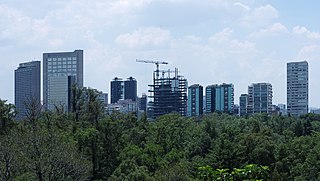
Miguel Hidalgo is a borough (alcaldía) in western Mexico City, it encompasses the historic areas of Tacuba, Chapultepec and Tacubaya along with a number of notable neighborhoods such as Polanco and Lomas de Chapultepec. With landmarks such as Chapultepec Park and the Museo Nacional de Antropología, it is the second most visited borough in Mexico City after Cuauhtémoc where the historic center of Mexico City is located. Tacubaya and Tacuba both have long histories as independent settlements and were designated as “Barrios Mágicos” by the city for tourism purposes.

Sevilla is a station on Line 1 the Mexico City Metro. It is located in the Cuauhtémoc borough in the centre of Mexico City, on Avenida Chapultepec and Sevilla street. It serves colonias Roma and Juárez. Since 9 November 2023, the station has remained closed for modernization work on the tunnel and the line's technical equipment.

Lake Texcoco was a natural lake within the Anahuac or Valley of Mexico. Lake Texcoco is best known for an island situated on the western side of the lake where the Mexica built the city of Mēxihco Tenōchtitlan, which would later become the capital of the Aztec Empire. After the Spanish conquest, efforts to control flooding led to most of the lake being drained.
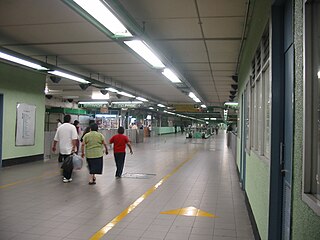
Salto del Agua is a metro (subway) station on the Mexico City Metro. It is located in the Cuauhtémoc borough in the center of Mexico City. Since 9 July 2022, the Line 1 station has remained closed modernization work on the tunnel and the line's technical equipment.

Chimalpopoca or Chīmalpopōcatzin (1397–1427) was the third Emperor of Tenochtitlan (1417–1427).

The Valley of Mexico, sometimes also called Basin of Mexico, is a highlands plateau in central Mexico. Surrounded by mountains and volcanoes, the Valley of Mexico was a centre for several pre-Columbian civilizations including Teotihuacan, the Toltec, and the Aztec Empire. The valley used to contain five interconnected lakes called Lake Zumpango, Lake Xaltocan, Lake Xochimilco, Lake Chalco and the largest, Lake Texcoco, covering about 1,500 square kilometers (580 sq mi) of the valley floor. When the Spaniards arrived in the Valley of Mexico, it had one of the highest population concentrations in the world with about one million people. After the conquest of the Aztec Empire, the Spaniards rebuilt the largest and most dominant city, Mēxihco Tenōchtitlan, renaming it Ciudad de México and over time began to drain the lakes' waters to control flooding.

The National Museum of Anthropology is a national museum of Mexico. It is the largest and most visited museum in Mexico. Located in the area between Paseo de la Reforma and Mahatma Gandhi Street within Chapultepec Park in Mexico City, the museum contains significant archaeological and anthropological artifacts from Mexico's pre-Columbian heritage, such as the Stone of the Sun and the Aztec Xochipilli statue.

The Aztecs were a Pre-Columbian Mesoamerican people of central Mexico in the 14th, 15th, and 16th centuries. They called themselves Mēxihcah.
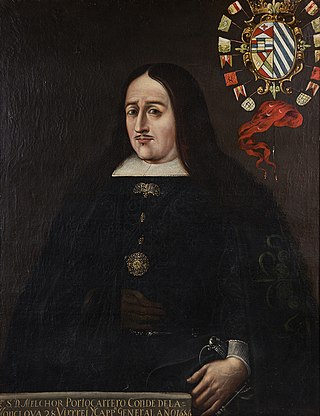
Don Melchor Portocarrero y Lasso de la Vega, 3rd Count of Monclova was viceroy of New Spain from November 30, 1686 to November 19, 1688 and viceroy of Peru from August 1689 to 1705.

Mexico City Metro Line 1 is one of the twelve metro lines operating in Mexico City, Mexico. Officially inaugurated in 1969, it went to become the first metro line to be built in the country. Its identifying color is pink and it runs through the city from west to east.
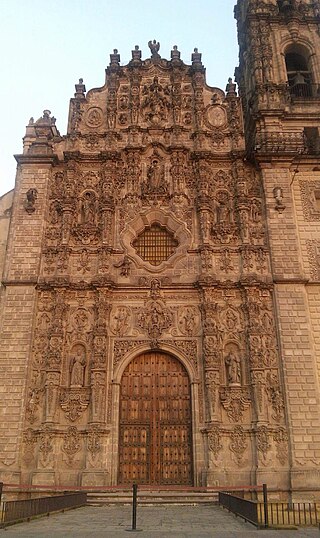
Tepotzotlán is a city and a municipality in the Mexican state of Mexico. It is located 40 km (25 mi) northeast of Mexico City about a 45-minute drive along the Mexico City-Querétaro at marker number 41. In Aztec times, the area was the center of a dominion that negotiated to keep most of its independence in return with being allied with the Aztec Triple Alliance. Later, it would also be part of a "Republic of the Indians," allowing for some autonomy under Spanish rule as well. The town became a major educational center during the colonial period when the Jesuits established the College of San Francisco Javier. The college complex that grew from its beginnings in 1580 would remain an educational center until 1914. Today this complex houses the Museo del Virreinato, with one of the largest collections of art and other objects from this time period.

Tlatelolco was a pre-Columbian altepetl, or city-state, in the Valley of Mexico. Its inhabitants, known as the Tlatelolca, were part of the Mexica, a Nahuatl-speaking people who arrived in what is now central Mexico in the 13th century. The Mexica settled on an island in Lake Texcoco and founded the altepetl of Mexico-Tenochtitlan on the southern portion of the island. In 1337, a group of dissident Mexica broke away from the Tenochca leadership in Tenochtitlan and founded Mexico-Tlatelolco on the northern portion of the island. Tenochtitlan was closely tied with its sister city, which was largely dependent on the market of Tlatelolco, the most important site of commerce in the area.
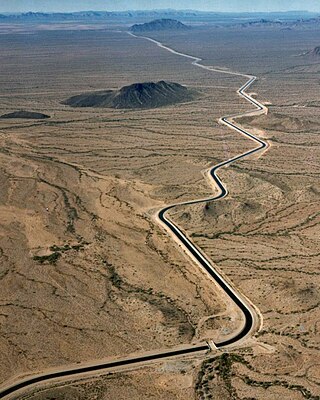
An aqueduct is a watercourse constructed to carry water from a source to a distribution point far away. In modern engineering, the term aqueduct is used for any system of pipes, ditches, canals, tunnels, and other structures used for this purpose. The term aqueduct also often refers specifically to a bridge carrying an artificial watercourse. Aqueducts were used in ancient Greece, ancient Near East, and ancient Rome. The simplest aqueducts are small ditches cut into the earth. Much larger channels may be used in modern aqueducts. Aqueducts sometimes run for some or all of their path through tunnels constructed underground. Modern aqueducts may also use pipelines. Historically, agricultural societies have constructed aqueducts to irrigate crops and supply large cities with drinking water.
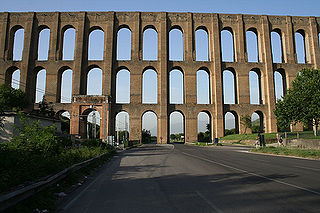
Aqueducts are bridges constructed to convey watercourses across gaps such as valleys or ravines. The term aqueduct may also be used to refer to the entire watercourse, as well as the bridge. Large navigable aqueducts are used as transport links for boats or ships. Aqueducts must span a crossing at the same level as the watercourses on each end. The word is derived from the Latin aqua ("water") and ducere, therefore meaning "to lead water". A modern version of an aqueduct is a pipeline bridge. They may take the form of tunnels, networks of surface channels and canals, covered clay pipes or monumental bridges.

The Baths of Chapultepec are a series of pools used from the pre-Columbian period until the beginning of the 20th century, to house the water from the springs of Chapultepec Hill. The springs provided drinking water to Mexico City. Among the remains are the Baths of Moctezuma and the remains of colonial-era structures in Well 5, or Manantial Chico, of Chapultepec.

The environmental history of Latin America has become the focus of a number of scholars, starting in the later years of the twentieth century. But historians earlier than that recognized that the environment played a major role in the region's history. Environmental history more generally has developed as a specialized, yet broad and diverse field. According to one assessment of the field, scholars have mainly been concerned with "three categories of research: colonialism, capitalism, and conservation" and the analysis focuses on narratives of environmental decline. There are several currents within the field. One examines humans within particular ecosystems; another concerns humans’ cultural relationship with nature; and environmental politics and policy. General topics that scholars examine are forestry and deforestation; rural landscapes, especially agro-export industries and ranching; conservation of the environment through protected zones, such as parks and preserves; water issues including irrigation, drought, flooding and its control through dams, urban water supply, use, and waste water. The field often classifies research by geographically, temporally, and thematically. Much of the environmental history of Latin America focuses on the nineteenth and twentieth centuries, but there is a growing body of research on the first three centuries (1500-1800) of European impact. As the field established itself as a more defined academic pursuit, the journal Environmental History was founded in 1996, as a joint venture of the Forest History Society and the American Society for Environmental History (ASEH). The Latin American and Caribbean Society for Environmental History (SOLCHA) formed in 2004. Standard reference works for Latin American now include a section on environmental history.


























